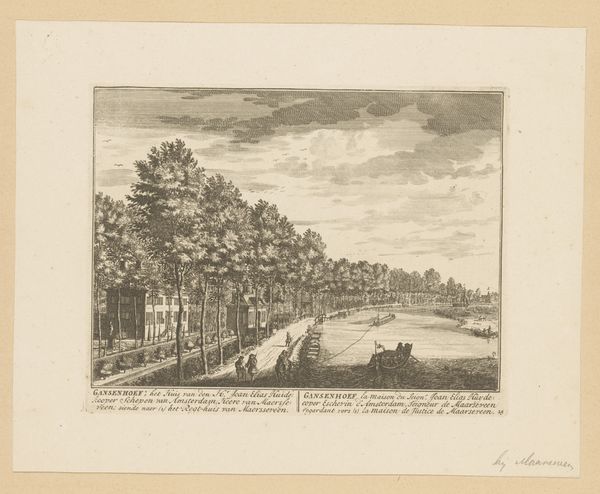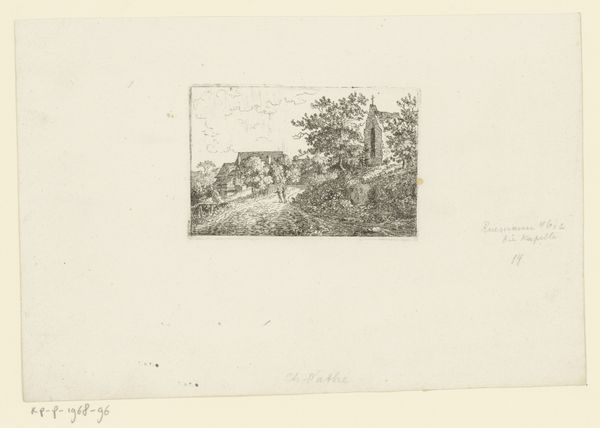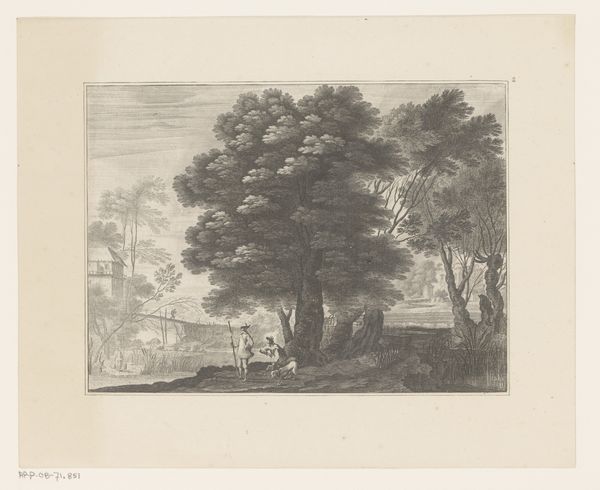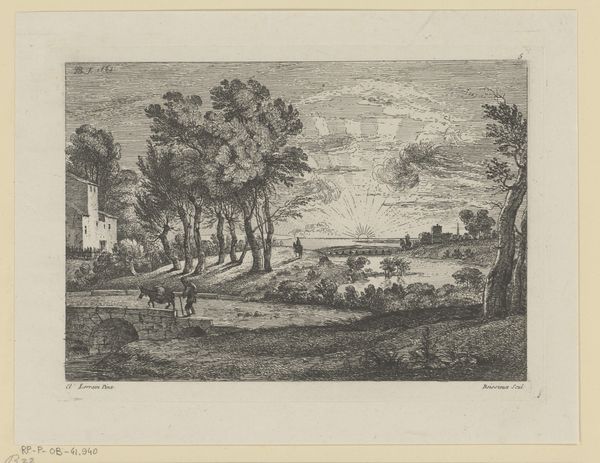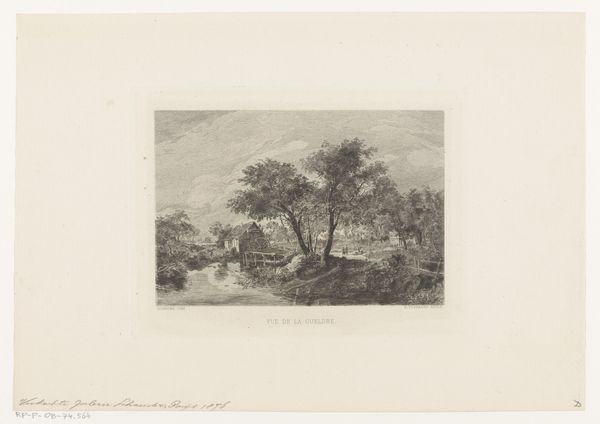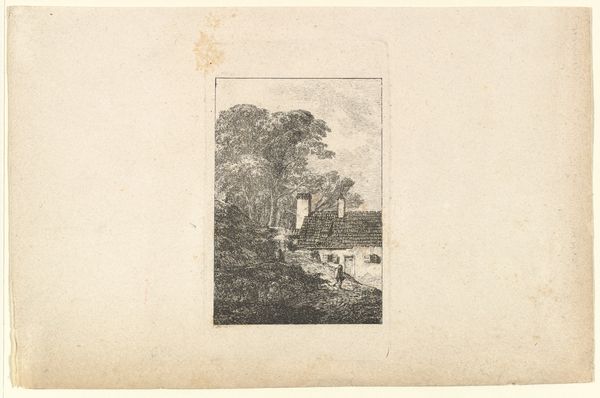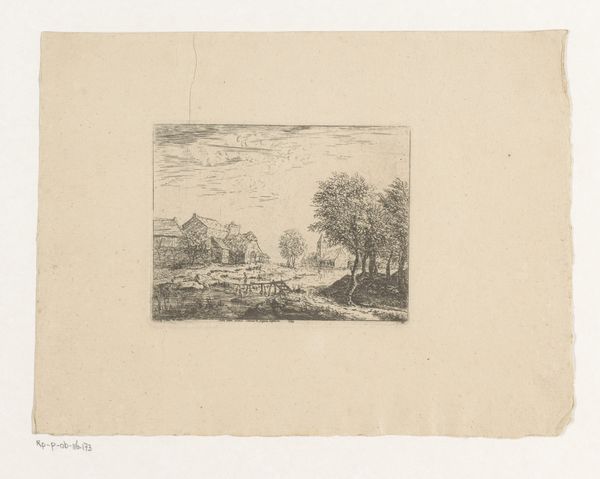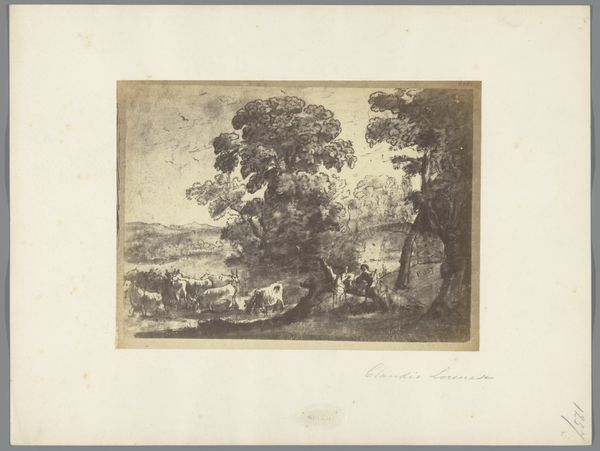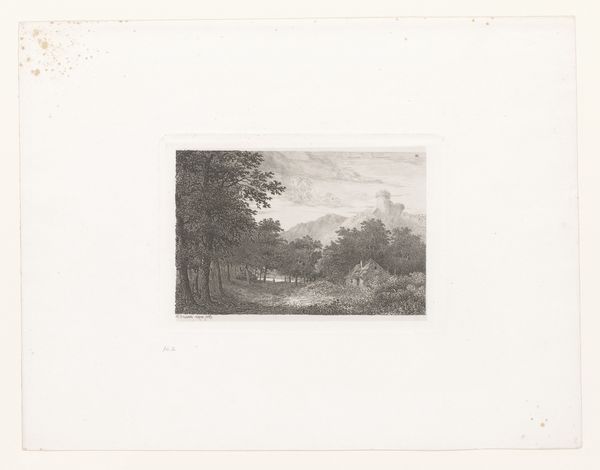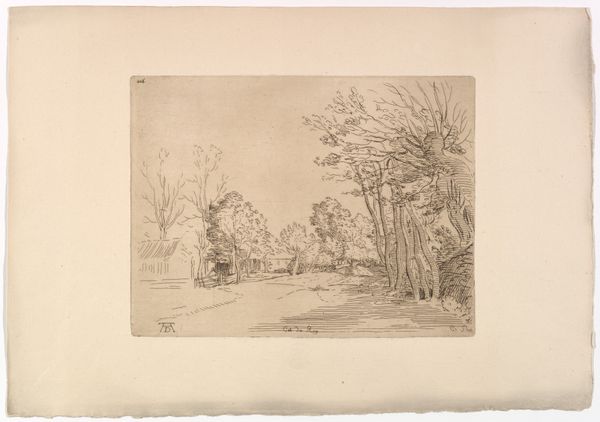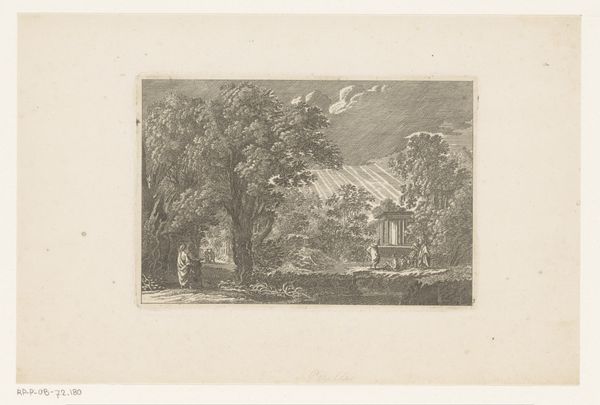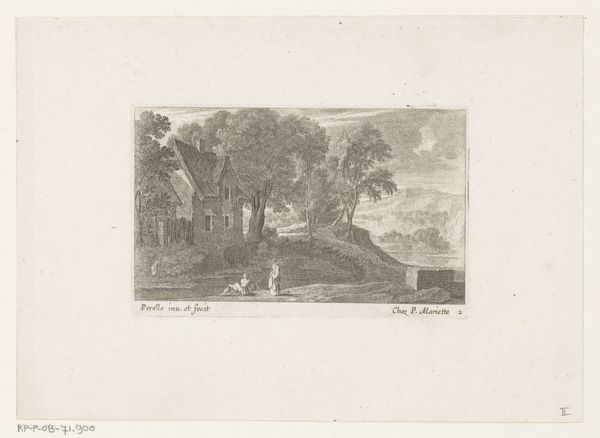
print, etching
#
dutch-golden-age
# print
#
etching
#
landscape
Dimensions: height 138 mm, width 168 mm
Copyright: Rijks Museum: Open Domain
Curator: This is Roelant Roghman's "Gezicht op Sloten," an etching from around the mid-17th century. It’s a pretty little landscape scene. Editor: Yes, it has a quaint quality. It reminds me a little of a postcard. I wonder, though, how the use of etching affected the availability and reception of landscape art during this period. Curator: That’s a fantastic question! Etching allowed for the mass production of images, meaning landscapes, previously reserved for wealthy patrons, could reach a wider audience. How do you think this might have shifted ideas around land ownership or national identity? Editor: Well, suddenly more people could access these views of the countryside, even if they lived in cities or couldn't afford large paintings. That accessibility perhaps democratized the ownership, or at least the idea of ownership, of the land, and promoted awareness about it. Curator: Precisely. And look closely at the detail. The etching technique allows for incredibly fine lines, capturing texture, from the bark on the tree to the ripples in the water. This level of detail speaks to the engraver's mastery over materials and their effect on how such works of art can spread. What do you observe about the human figures within the landscape? Editor: I see a couple figures fishing on the bank of the river, while others walk along the path. So everyday people embedded in the environment. That feels connected to the shift in audience that we talked about a moment ago. Not grand narratives, just daily life. Curator: Exactly! The materiality of the print shapes its reception and offers insights into the social landscape of the time. It speaks volumes about how art can both reflect and shape societal values around land and labor. Editor: That’s amazing! Thinking about the materiality of etching and how that shaped distribution… it adds so many layers to my understanding of the piece. Curator: Indeed. By focusing on the production and materials, we uncover broader social and economic implications.
Comments
No comments
Be the first to comment and join the conversation on the ultimate creative platform.

